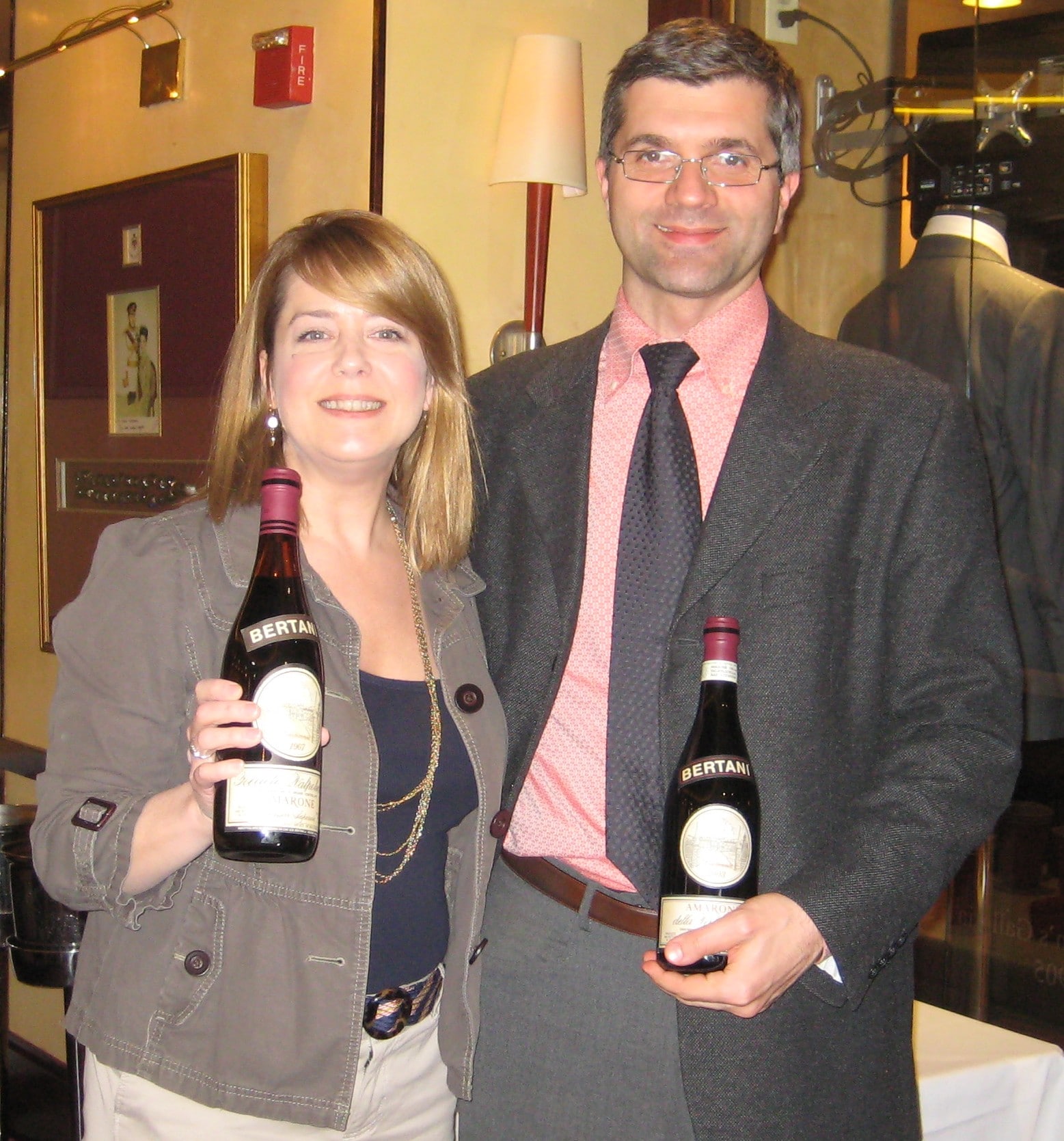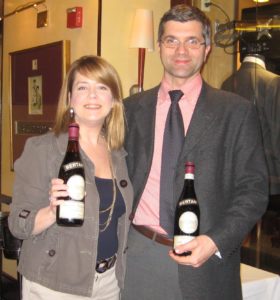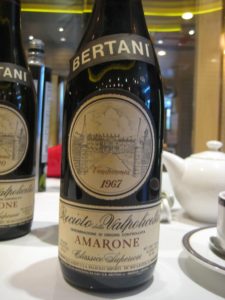
30 Mar Wine for the Times: Amarone
Wine drinkers often believe the myth that all wines improve with age. In fact, most wines that we purchase are built to be consumed within one to five years.
However, there are some wines that are known by wine enthusiasts and collectors to stand the test of time. Among these long living wines is Amarone made in the Vento region of northeastern Italy. Bertani Amarone recently sponsored a tasting of several of their vintages dating back to 1967 at the Café Milano in Washington, D.C. This tastings really highlighted how these wines improve as they age.

with Christian Ridolfi, winemaker at Bertani Vineyards
Amarone is made from a blend of three grapes—Corvina, Rondinella and Molinara. The real magic of these wines is in the way they are created. After harvest the best grapes from each cluster are detached and set out on cane mats to dry. The mats are housed in a loft on a raised platform so that they are exposed to air to assist in the drying process. The grapes will stay on these mats from October to February during which they will also be exposed to Botrytis Cinerea or what we call the noble rot. Noble rot works to further concentrate and shrivel the grapes and is also responsible for the legendary wines of Sauternes.
In February, these dried grapes are ready for fermentation and at Bertani the Amarone will spend five to eight years in Slavonian oak barrels. This lengthy aging insures that the wines are released only when they are ready to be consumed. This is a great service to the customer and also allows the winery to know the wine is stored in the best conditions. Aging the wine for this extended period of time is a huge investment for the winery. It can take six to nine years from harvest before they can begin selling the wine.
Amarone is a dry, full-bodied wine with great concentration of fruit. Aromas and flavors of red fruits like cherries are accented by plum, spice, licorice, cocoa and vanilla. They drying process intensifies the flavors of the grapes and also doubles the resveratrol in the grapes. (Resveratrol is found in the skins of some red grapes and some research shows can ward off cancer, extend life and possibly assist in managing blood sugar.)

Vintage 1967 Bertani Amarone from Veneto, Italy
The Bertani tasting included the following vintages 2003, 1998, 1980 and 1967. These wines each shows similar characteristics but differed from their age as well as the growing conditions in that vintage. The wines range in price from $120 for the youngest to $420 for the oldest. Bertani also makes Secco Bertani which is a Valpolicella Ripasso that uses the grapes skins from the Amarone fermentation. This creates fuller style Valpolicella with Amarone characteristics that retails for a more affordable price of $19.
The 2003 was bigger and riper than most because it was a hot vintage. 2003 had lower yields much like all our 401K’s did in that year.
The 1998 was delicious and made me think of the exuberance of the late nineties when there was nowhere to go but up.
The grand finale of the tasting was the 1967, which has grown into an elegant showcase of how Amarone can become better with age. Browner in color but still bright with fruit it finishes with finesse you won’t find in young wines.
Although I did not experience the late sixties, I can only hope they were as magical as the 1967 Bertani Amarone was for me.
